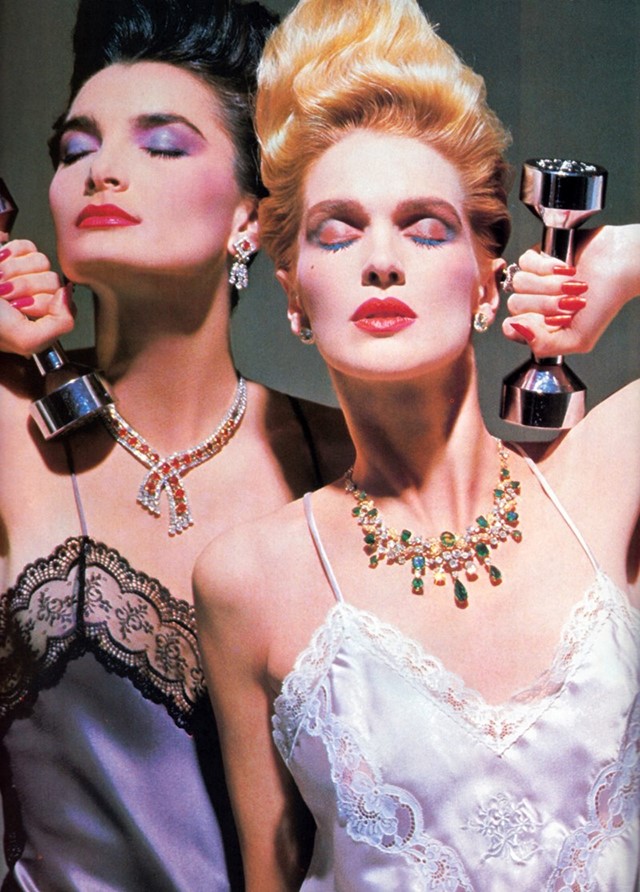AnOther selects the out-of-print editions we wish were ours to own
'Out of print': three small words with the power to make authors shudder, and shrewd book collectors squeal with delight. As with all great treasures, not being able to source and own a book for oneself only makes the wanting of it more intense, and when it comes to these nine rare tomes – each of which is hard to attain, but an essential asset to any good library – this couldn't be more true. From a fabulous excess of matching florals, à la David Hicks, to the painterly portraits of David Seidner, we hope these titles will inspire you to begin a collection of your own.
Frank Zachary and Victor Skrebneski, Skrebneski: Black, White and Colour Photographs 1949-1989 (Bulfinch Press, 1989)
Peruse almost any 1980s issue of Town & Country and you’re sure to come face-to-face with the distinctive work of Victor Skrebneski, one of American's most in-demand fashion photographers of the era. Now frequently overlooked for his myriad achievements in the medium, Skrebneski was once the go-to man for Estée Lauder’s memorable ad campaigns, and is credited with taking the first notable photographs of a young Cindy Crawford. As this tome's title suggests, the photographer shot in both black and white and colour, but the real treat lies in the vivid photo shoots he directed for Town & Country, which masterfully blur the fine line between fashion and art – many of which can be found here.
Highlights in Skrebneski: Black, White and Colour Photographs 1949-1989 include the magazine's ‘Designer and his Muse’ portfolio, featuring the likes of Hubert de Givenchy and Claude Montana, as well as Skrebneski's pictures of a 19-year-old Crawford in glamour workout gear, all of which serve to prove that both the book, and the photographer require revisiting.
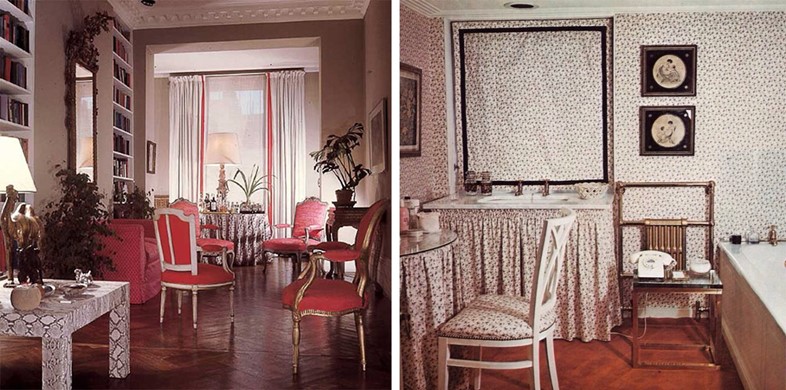
David Hicks, On Living – With Taste (Leslie Frewin, 1968)
David Nightingale Hicks was arguably the most revered interior designer of the 1960s, his bold creations the height of fashion among the era's jetset; Prince Charles and cosmetics queen Helena Rubinstein were among his many prestigious clients, as well as King Fahd of Saudi Arabia, for whom he decked out an entire yacht. Hicks was a master of hyperdynamic colour combinations, and became particulary notable for his particular penchant for mixing striking antiques with abstract paintings and modern furnishings in an over-the-top yet orderly manner. In the mid-1960s, he realised he could rarely source anything that matched up to his specific criteria, and so started up his own line of brightly patterned carpets and fabrics. In this book, On Living – With Taste, one of a number of practical tomes scripted by Hicks, the late, larger-than-life personality lays down some of his most basic but brilliant laws, from advice on how to mix colours successfully, to the art of blending old with new.
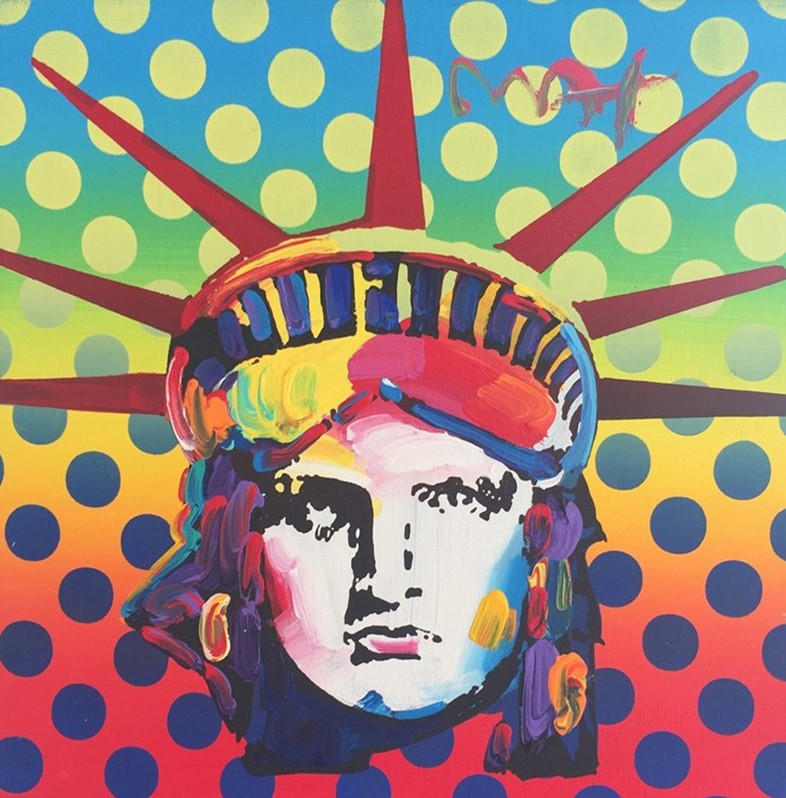
Charles A. Riley II, The Art of Peter Max (Abrams, 2002)
Dégradés of fuchsias, neon yellows and deep violets depicting a sunset; a scarlet nude reclining on a bed of neon greenery; vibrant, swirling flowers flowing from a man’s mind. Peter Max is a psychedelic bravura in his own right. The illustrator and graphic hero is an iconic figure of the 1960s and 70s, and quite possibly one of the most famed commercial artists of the 20th century, and was particularly renowned for his use of rainbow spectrums and for injecting pop art and neo-Expressionism into every possible medium – including his iconic re-renderings of the Mona Lisa and the Statue of Liberty. Max has ostensibly done it all: from painting presidents to being named the official artist of a slew of events (Super Bowls, Grammys, US Opens) and designing postage stamps. He was even given free rein over a 1977 Continental Airlines plane to use as his very own canvas. If you ever find yourself in a landscape awash with greys, The Art of Peter Max, which contains more than 300 coloured photographs, many of which were never published elsewhere, is sure to set you ablaze.
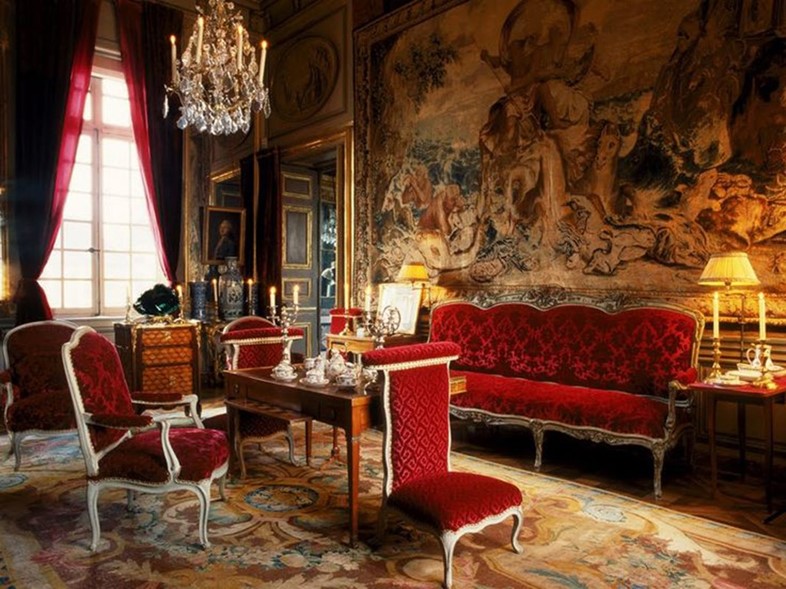
Franck Ferrand, Jacques Garcia: Decorating in The French Style (Flammarion, 1999)
A few steps into the Hôtel Costes in the 1er arrondissement in Paris are all that's required to explain the world’s fascination with Jacques Garcia. The 1996 building swiftly became the calling card of the lauded architect and interior designer, who has gone on to redefine notions of opulence ever since. His signature style is defined by a heady combination of Baroque and Rococo elements, with an added layer of sophisticated sexiness – dimmed lights, velvet drapes and plush ottomans – that very few manage to perfect.
Garcia’s list of hotels and brasseries is endless (from Ladurée’s mint-green tearoom to Marrakech’s painstakingly splendid renovation of La Mamounia), but Decorating in the French Style invites readers to delve into one space in particular: the Champ-de-Bataille castle in Normandy, acquired by the designer in 1992. Enjoy many a happy hour leafing through beautiful interiors, Garcia's impressive collections of royal objets d’art and the sublime landscapes of the abode’s formal gardens, restored by Garcia himself.
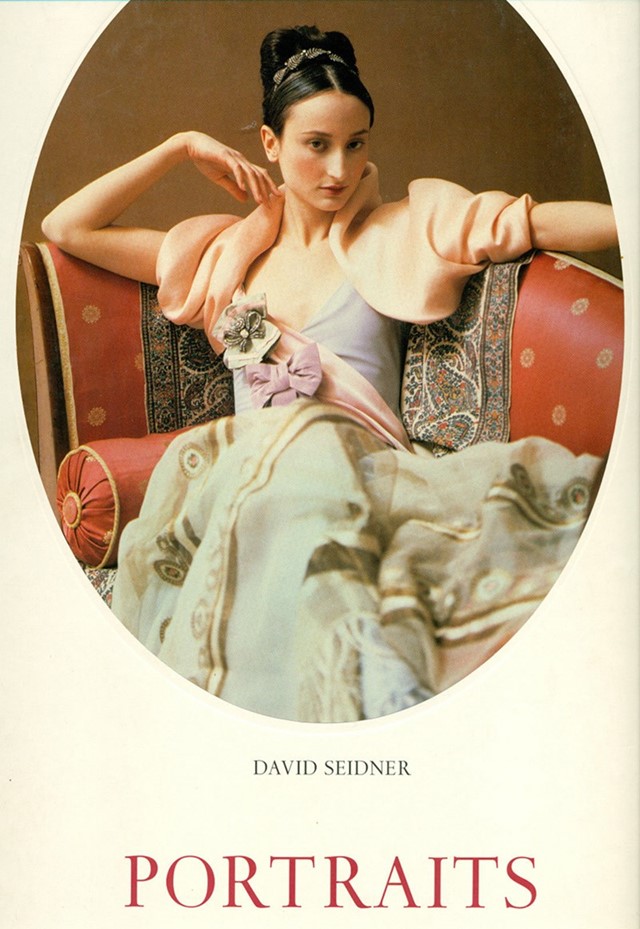
David Seidner, Portraits (Assouline, 1999)
The eternal debate of whether fashion could be seen as art was quickly put to rest with David Seidner. The American photographer, who sought inspiration not only in Greek marble sculptures but also in the work of Velázquez and Ingres, was revered for his exquisite depiction of haute couture – who can forget his fragmented silhouettes of Ungaro, Azzedine Alaïa, Jean Patou and Valentino, triggered by the music of John Cage? Contracts with Yves Saint Laurent in the 1980s and a plethora of assignments for Vanity Fair and Harpers & Queen catapulted Seidner into a league of his own.
This book, published the same year as the photographer's untimely death from AIDS, is a fascinating tribute to John Singer Sargent, whose work so intrigued Seidner that he set about finding and photographing descendants of the American painter's sitters. The result is a sublime interpretation of modern aristocracy (the Miller sisters, Natasha Fraser-Cavassoni, Honor Fraser, Helena Bonham Carter et al), borrowing Old World poses set against a stark background punctuated by opulent embellishments.
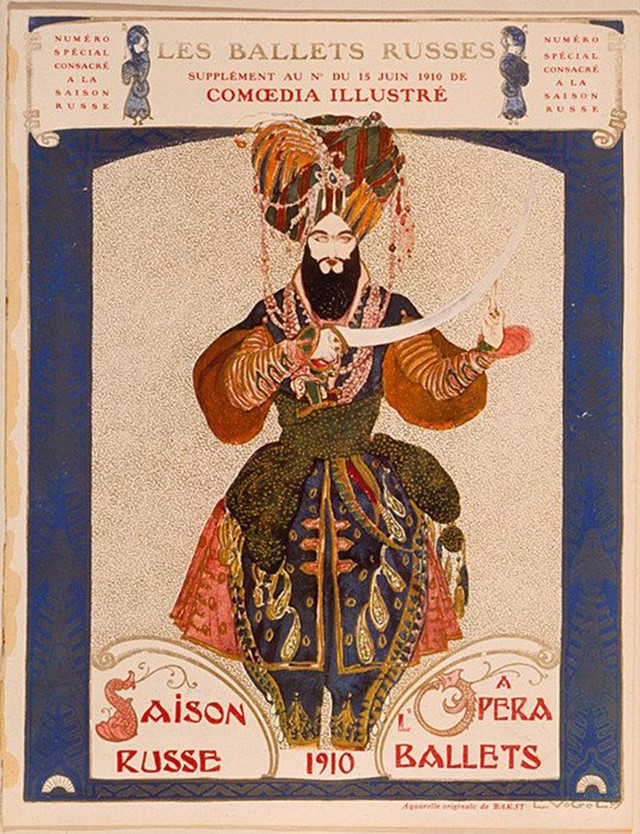
Militsa Pozharskaya and Tatiana Volodina, The Russian Seasons in Paris, Sketches of the Scenery and Costumes 1908-1929 (Moscow: Iskusstvo Art Publishers, 1988)
With texts in both Russian and English, this glorious book recaptures and documents the history of Sergei Diaghilev’s incomparable Paris-based dance company, the 'Ballets Russes.' Performing between 1909 and 1929 throughout Europe and North and South America, the troupe pushed at the very boundaries of choreography, music and painting – Matisse, Cocteau and Picasso were among its famous collaborators. The Russian Seasons in Paris... is widely regarded as the ultimate reference book on the subject, and has been since its earliest edition in the 1920s. Its pages brim with illustrations of stage and costume designs, lists of the opulent operas and ballets performed, artist portraits and more.
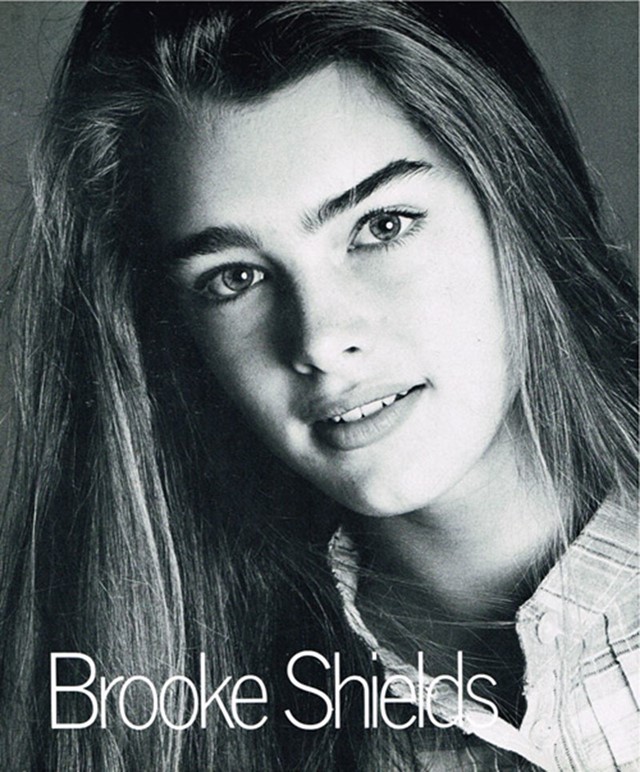
Francesco Scavullo, Scavullo Women (Harpercollins, 1984)
American fashion photographer Francesco Scavullo immortalised the glamour of women in the 1970s and 80s with his revered, headshot-style portraiture – most famously through his beguiling covers for Cosmopolitan magazine, which he shot and rigorously creative directed for over three decades. In fact, he was so involved in the process of styling, casting and creating the overall look of each cover that the transformation that models underwent at his hands became known as ‘Scavullo-ization’.
Women is an ode to Scavullo's now legendary ability to metamorphose, with 'before and after' pictures of some of the world’s most beautiful women (their make-up done by Scavullo-favourite Way Bandy). It features everyone from a 17-year-old Brooke Shields to Princess Caroline of Monaco, as well as Farrah Fawcett and supermodel Gia Carangi, the ill-fated Philadelphia native whose career the photographer helped launch. Each woman also provides tips from her own beauty regimens, in case you were looking to emulate either decade’s look. “Somebody’s got to come out for a view of life that is beautiful,” the photographer famously said in a 1976 Los Angeles Times interview. “I know there are times of unrest. But I also know there is beauty.” We couldn’t agree more.
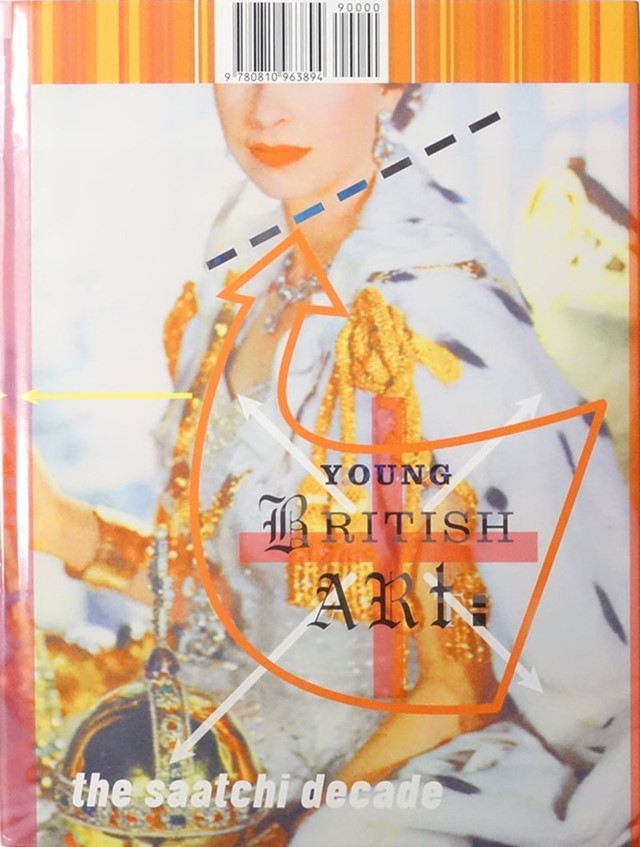
Dick Price, Young British Art: The Saatchi Decade (Abrams, 1999)
In 1988, Damien Hirst, then a second-year BA student at Goldsmiths, organised Freeze – a vast exhibition of his and his fellow students' work in an empty London Port Authority building at Surrey Docks. In their arrangement of the show space, the exhibitors consciously replicated Charles Saatchi's first gallery in St John's Wood, capturing the notorious art collector's attention in the process. Saatchi bought several pieces from the exhibit, going on to become the group’s patron, investing in their irreverent art and hosting further shows of their work. Young British Art: The Saatchi Decade presents a wonderful, comprehensive overview of the visual talents that came to define the subsequently-dubbed YBA movement, including Sarah Lucas, Mat Collishaw, Tracey Emin, Michael Craig-Martin, Gary Hume, Sam Taylor-Wood and many more. An essential read for any contemporary art fanatic.
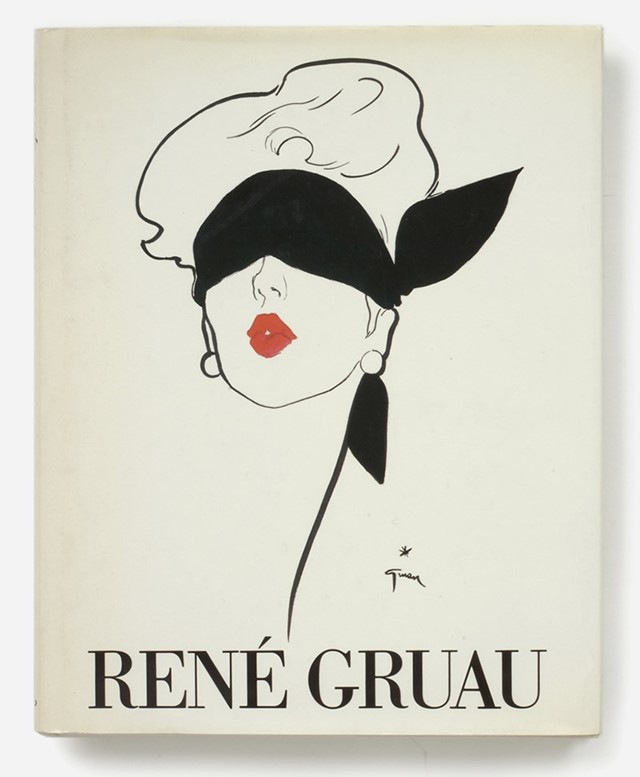
René Gruau, René Gruau (Rizzoli, 1984)
A favourite of fashion houses Balenciaga, Givenchy, Schiaparelli, Dior and Lanvin during the golden age of couture, René Gruau’s illustrations unquestionably gave photography a run for its money. Contributing to publications such as Cover for International Textiles, Vogue and Harper’s Bazaar, Gruau also created wondrous posters for the Moulin Rouge and the Lido in Paris, often borrowing from the aesthetic of Toulouse-Lautrec and La Belle Époque. His later projects included campaigns for Air France and Martini, as well as a poster for Federico Fellini’s masterpiece La Dolce Vita in 1959. A real treasure, René Gruau is a compilation of his most memorable works: an homage to the power of the pencil and brushstroke, if you will.
